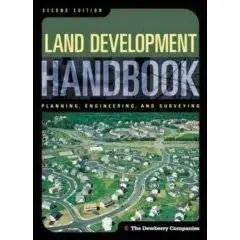The Dewberry Companies, " Land Development Handbook "
McGraw-Hill Professional; 2 edition (March 29, 2002) | ISBN:0071375252 | 1124 pages | PDF | 25,7 Mb
McGraw-Hill Professional; 2 edition (March 29, 2002) | ISBN:0071375252 | 1124 pages | PDF | 25,7 Mb
Planning Magazine : How to develop. "Forty years ago, for a typical suburban house, the cost of engineering, planning, and surveying, including fees paid to agencies, was about the cost of a refrigerator today. Today it is probably greater than the total cost of all of kitchen and other electronic appliances combined." So write Sidney Dewberry and Dennis Couture in the overview chapter that introduces the mammoth second edition of the Land Development Handbook: Planning, Engineering, and Surveying (2002; McGraw-Hill; 1,124 pp.; $150). A development and consulting firm, the Dewberry Companies, is listed as author, which seems appropriate since most of the 26 editors and contributing authors are employees of the firm.
The first edition of this handbook was published in 1996. For this version, several of the 41 chapters have been updated, and the order of presentation has been changed to reflect the way issues come up in a project. There are six sections: feasibility and site analysis, conceptual design, schematic design, final design, plan submission and permitting, and construction. This is a how-to book that aspires to be both extensive and detailed; its table of contents alone runs 13 pages.
As the title and cover photo suggest, the authors focus on development of greenfields. The engineering perspective is dominant, and the book's brief mentions of smart growth and new ways of designing feel largely extraneous to the business at hand. Thus, the 51-page chapter on suburban street design devotes two pages to pedestrians, and the list of suggested readings in the chapter on development patterns and principles includes no work published since 1990.



